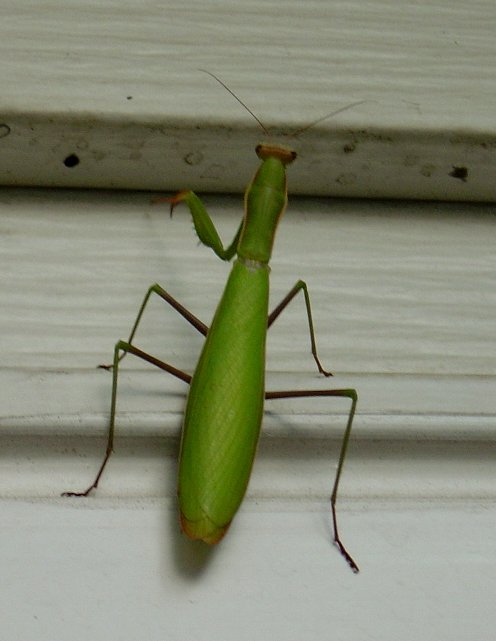


This question of why some mantises were brown and some were green has been an open topic of research at least throughout the 20th century, with lots of hypotheses suggested but until recently no good evidence to support one idea over the others.

No one (including the teachers!) knew the answer, although several great hypotheses were suggested. Once, when some students in a Hitchcock homeschool program were observing a brown European mantis sunning itself on the side of our building, the students speculated on why some mantises were green and others were brown.

Individuals of both species come in green and brown types, or morphs. Chinese mantises have vertical stripes on their faces whereas the faces of European mantises lack stripes. Another difference between the European and Chinese mantis is the patterning on the head. In both species, females grow 1 to 2 cm longer than males, and are less agile but more physically powerful.
#Prey mantis full#
Chinese mantises are the largest mantis species among more than 20 found on our continent, reaching 11 centimeters (4.3 inches) when full grown. One difference between the two is their size. Here at the Hitchcock Center we’ve seen our fair share of mantises. Both species were introduced over 100 years ago, likely by gardeners looking to control pests. As you can guess from their common names, neither of these insects is native to North America. In Massachusetts there are two species of praying mantises, the Chinese mantis, Tenodera aridifolia, and the European mantis, Mantis religiosa. Photo by eLKayPics, licensed via Creative Commons. A Small Environmental Center with a Big MissionĮuropean mantis in green coloration.Internship/Volunteer: Children’s Programming.Children, Youth and Family Programs Winter/Spring 2023.Our Commitment to DWS, Diversity, Equity and Inclusion.Praying mantises are able to turn their heads 180° for excellent vision and hearing. Their mouth parts have several strong cutting components to tear and consume through insect exteriors. Their famous forelegs are very powerful for their size and can crush its prey in half. Praying mantises are able to live this long because they have defense mechanisms that help aid in their survival. The natural lifespan of a praying mantis is about 10 to 12 months. Nymphs and adults are structurally quite similar, except that the nymph is smaller and has no wings. This froth then hardens, creating a protective coat around the eggs. The female lays 10 to 40 eggs in a frothy mass. Praying mantis goes through three stages of transformation: egg, nymph, and adult. Some species have evolved to not only blend in with foliage, but to mimic it appearing as either living or withered leaves, sticks, blades of grass, and even tree bark. Praying mantises protect themselves by camouflage and concealment in order to avoid predators and to better snare their prey. Their prey are caught and held securely with spiked forelegs. Insects form their primary diet, but larger species have been known to prey on small scorpions, lizards, frogs, birds, even mice. Praying mantises are exclusively predatory. There are over 20 species of praying mantis that are native to the United States. Praying mantis gets its name because of the "prayer-like" stance in which it is commonly observed.


 0 kommentar(er)
0 kommentar(er)
